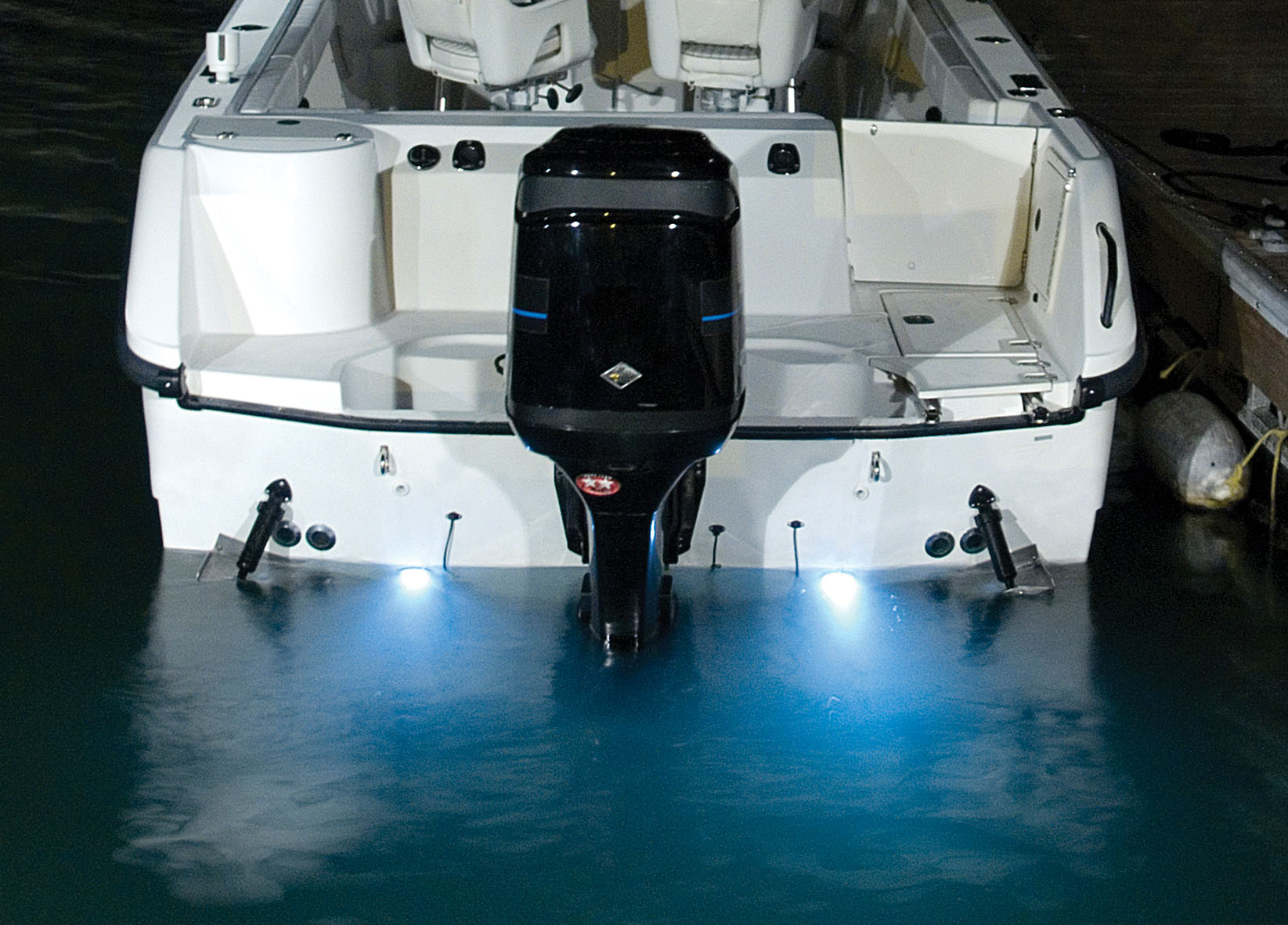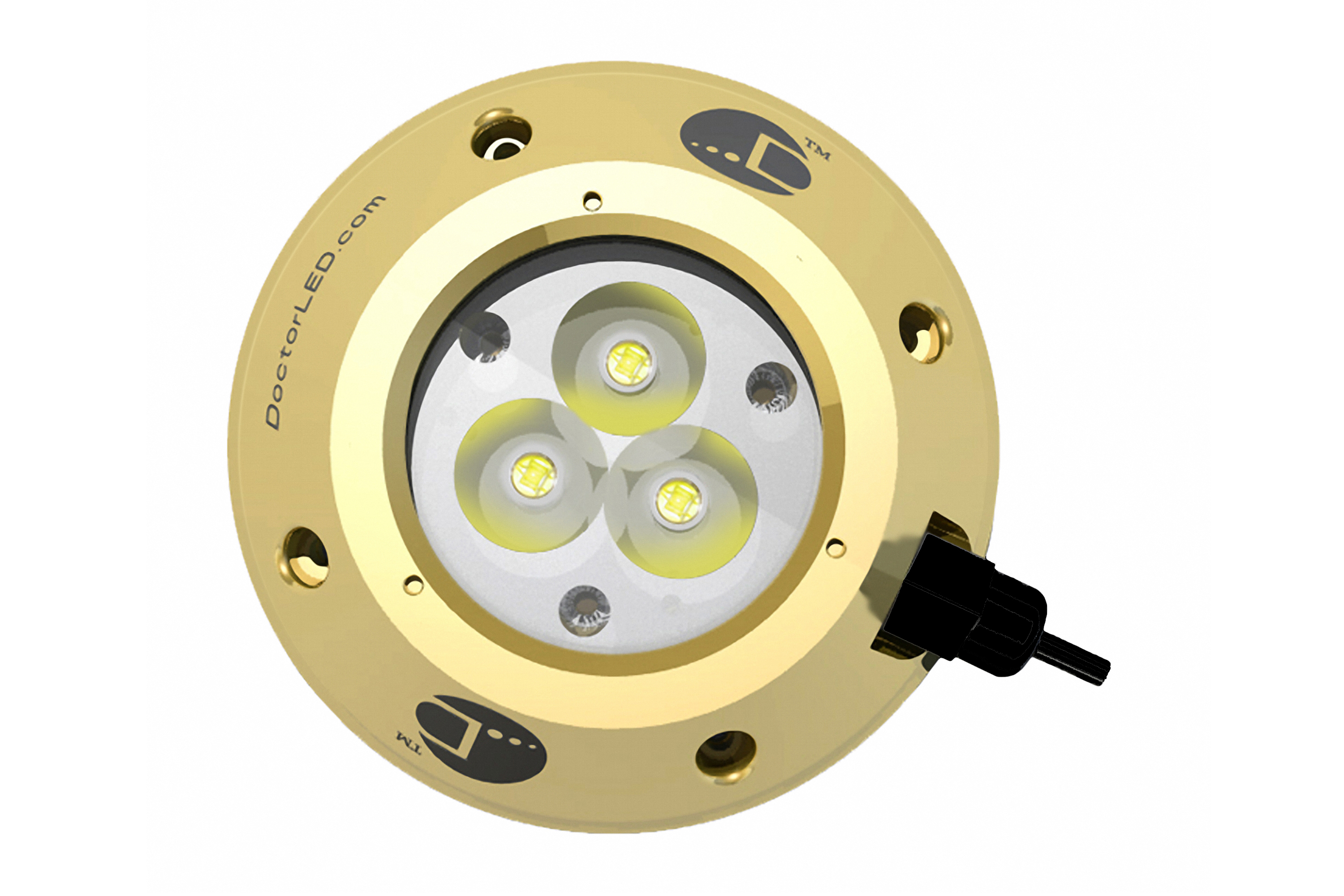May 30, 2012
By Frank Sargeant
Casting new light on your boat and trailer.
 Transom lights can be used to attract baitfish.
Transom lights can be used to attract baitfish.
Light Emitting Diodes—LEDs—are just the ticket for the Florida marine environment. They're tough, sealed in plastic or tempered glass and so durable that not even a fisherman can break them. Most are non-corrosive—no metal parts exposed to saltwater corrosion. They heat up very little—most energy put into them goes into making light, not heat, so there's no risk of them cracking when they hit chilly water. They run on a very low current.
The LEDs also have amazingly long lives, over 50,000 hours, or about four hours a day for 35 years! Compare that to the typical 1,500 to 3,000-hour life of an incandescent bulb and you can see they're quite an investment. It's true that LEDs are much more expensive when you buy them, but amortized over their amazing life span, they're in fact a good buy.
They're showing up everywhere aboard boats; in the running lights, naturally, but also along gunwales as courtesy lights, as cockpit lights mounted on towers, inside the rod boxes and hatches, and on the console. They even make great livewell lights.
And they are solving the major lighting bugaboo in boat trailers, tail lights. With conventional lights, most anglers run into problems within a year or two when a rig is launched regularly in salt water. The brine corrodes the metal contacts of conventional bulbs quickly, and few housings are truly waterproof. With LEDs, on the other hand, the lights should last indefinitely unless you back into a building.
So what are LEDs? Basically they use a flow of electrons to generate light, rather than heating up a filament until it glows white-hot, as in a standard light bulb. Variations in the design of materials used can produce different colored lights, so there's not necessarily a need for colored lenses as with white incandescent bulbs.
For fused connections such as those inside the boat, LEDs need considerably lower-rated breakers; check the info that comes with your LED and size the fuses or breakers to the recommendations.
Bait-tank lights? LED wins hands down. The low-profile lights complete with gaskets are easily installed. Price is just $9 to $40.
Interior “courtesy” lights are also a great application for LEDs. If you're chasing snook or swordfish all night, you can leave these low-draw lights on continuously with no fear of running down the battery or burning out the bulbs—choose the red colorations and you'll keep most of your night vision. Prices range from $9 to $30 each—a great investment.
 Dr. LED's underwater unit.
Dr. LED's underwater unit.
LED Manufacturers
> Abyss Technology makes a variety of marine-grade stainless steel and impact resistant tempered glass waterproof LED lights for underwater, exterior and interior lighting applications; www.abysslite.com; (954) 772-2022.
> Dr. LED sells a reading LED, generating the equivalent of around 30 watts of light, for about $50; www.doctorled.com; (206) 388-3701.
> FishGlow offers 12-volt underwater LED lighting. Each housing is milled from a solid ingot of marine grade aluminum with an anodized black finish. Made in the U.S.; www.FishGlow.com.
> Grote Industries makes a LED trailer light kit that includes lights, wires and mounting gear. I wired one of these kits on my trailer over a year ago, and it still looks and operates like new. West Marine sells them for around $70. (Get the whole kit, including enough wire to reach your hitch connector; wiring a short wire on a trailer assures corrosion at the junction when it gets submerged.) Visit www.grote.com; (812) 273-1296.
> Hella offers a spotlight/ambient light combo. Turn the switch one way and it produces 10 watts of white light. The other, only a red or blue ambient light ring illuminates for general cockpit lighting at extremely low power consumption—they're about $50; www.hella.com.
> Ocean LED makes the Amphibian Series, designed to be used in and out of water, and a range of thru-hull and flush-mount lights and cameras; www.oceanled.com; (954 ) 523-2250.
> Sea Vision makes underwater lights and cameras (for fiberglass, aluminum and steel-hulled vessels), dock lights and deck lights, and lighting accessories; www.seavision.com; (954) 760-4447.
FS Classics: This article was originally published in January 2009
